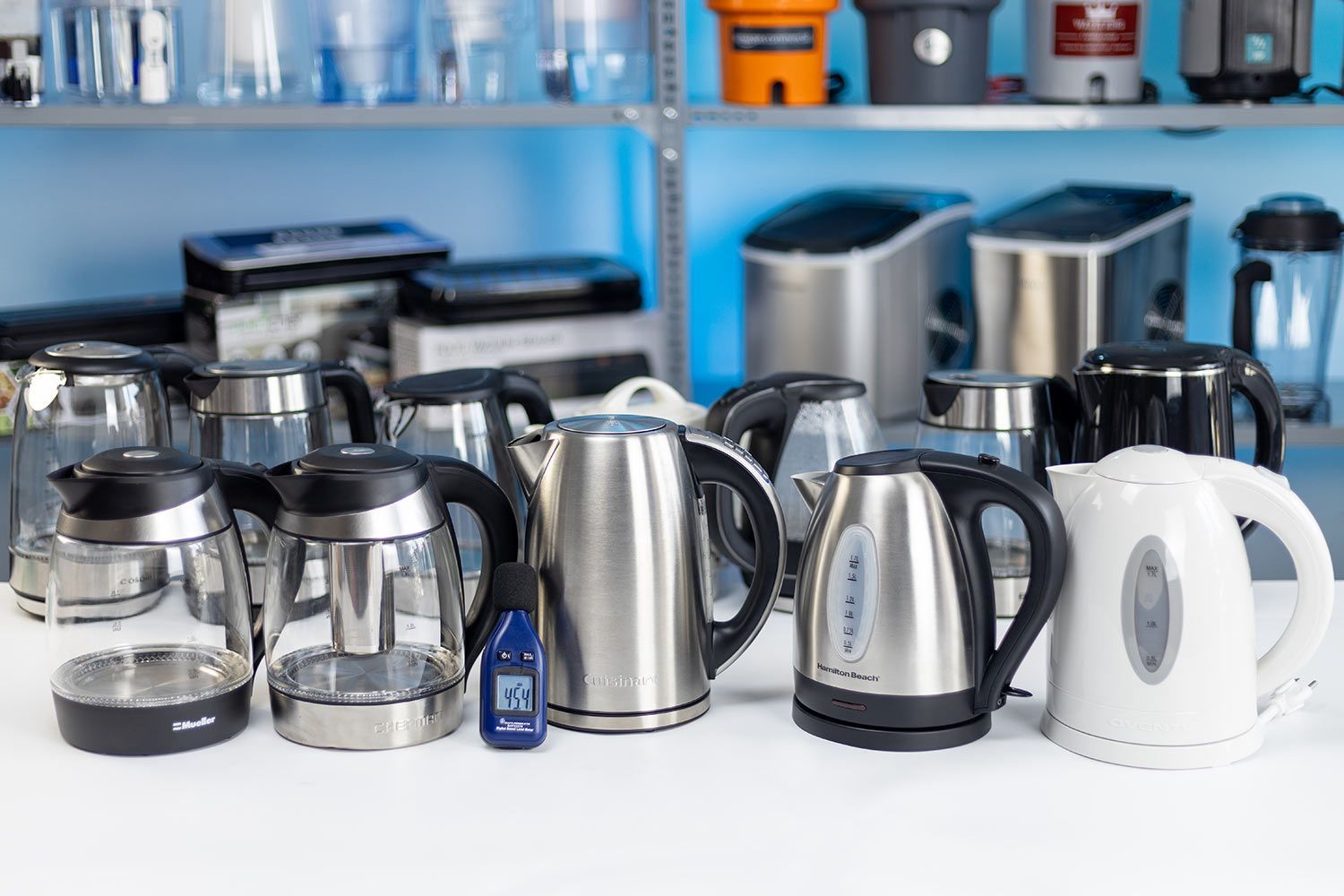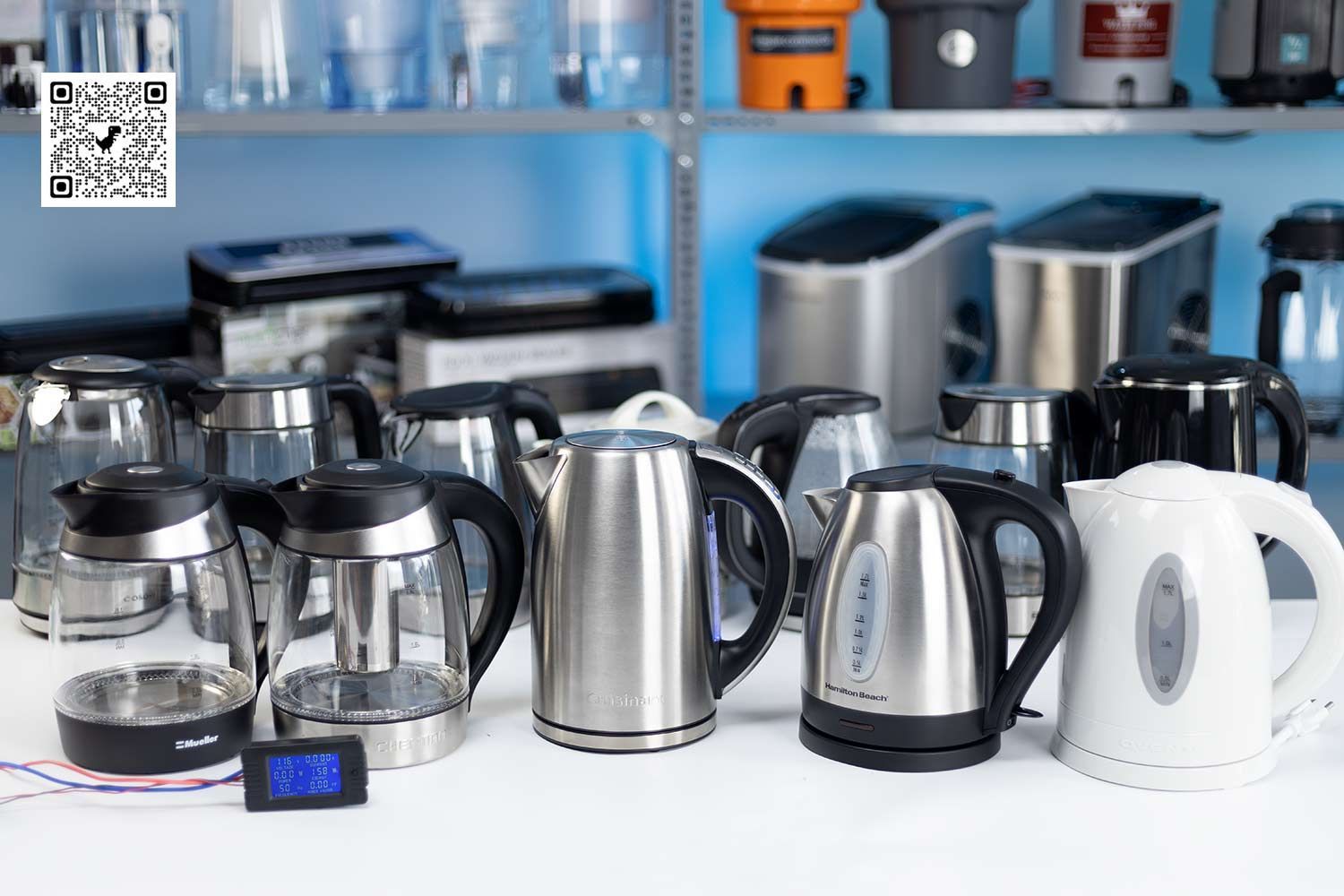Our recommendations are made independently. We may receive commissions from purchases made via our links.
Boiling Time Test for Electric Kettles
Boiling time is the key to an electric kettle’s performance. No one, after all, wants to wait for 10 minutes for a cup of tea or a bowl of instant ramen. Read on to find out how we set up our test parameters—including water volume and starting temperature.
This test is part of How We Test Electric Kettles v1.0
The key selling point of an electric kettle is its boiling time, considered faster than traditional stovetop kettle, or electric and gas stoves, or modern induction and infrared cooktops—not to mention even microwaves. Thus, boiling time is the most crucial aspect of an electric kettle’s performance.
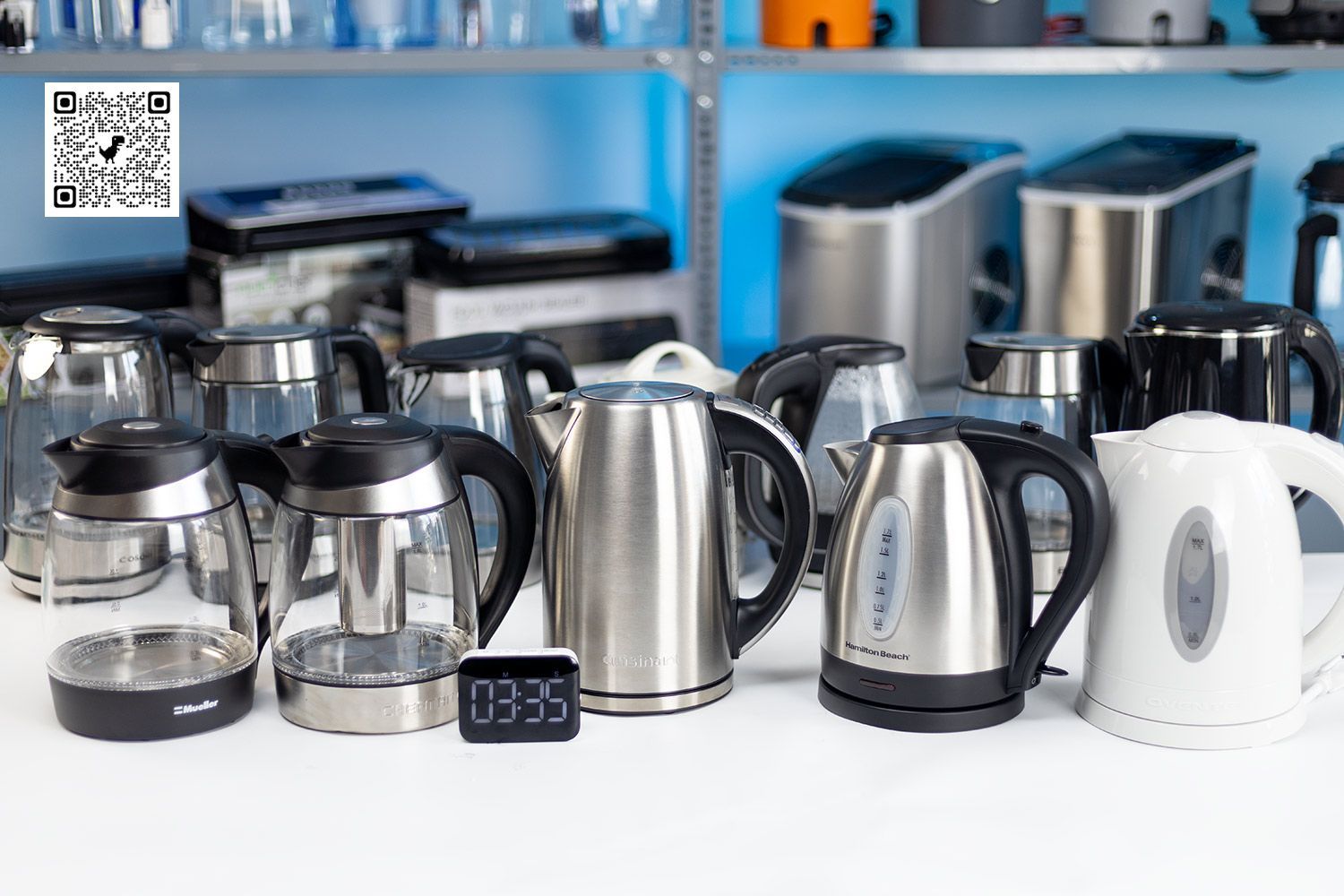
Appliance | Water Volume | Boiling Time |
|---|---|---|
2500 W kettle | 1 liter | 2-3 minutes |
1500W kettle | 1 liter | 4 minutes |
1500W microwave | 1 liter (4 x 250 ml of water) | 2-6 minutes (4 x 0.5-1.5 minutes) |
Induction cooktop | 1 liter | 5-6 minutes |
Gas stove | 1 liter | 6-8 minutes |
Electric stove | 1 liter | 8 minutes |
700-800W microwave | 1 liter (4 x 250 ml of water) | 10-12 minutes (4 x 2.5-3 minutes) |
Boiling time, however, can vary from kettle to kettle. Surprisingly, some may even be slower than other options such as an induction plate, but no one should have to wait for 10 minutes for a cup of tea or a bowl of instant ramen.
Boiling water is relatively straightforward, but technical details do matter and we explain these clearly below. Since boiling time is key to a good electric kettle, we assign the Boiling Test Time 45% of our Performance score.
Water Volume
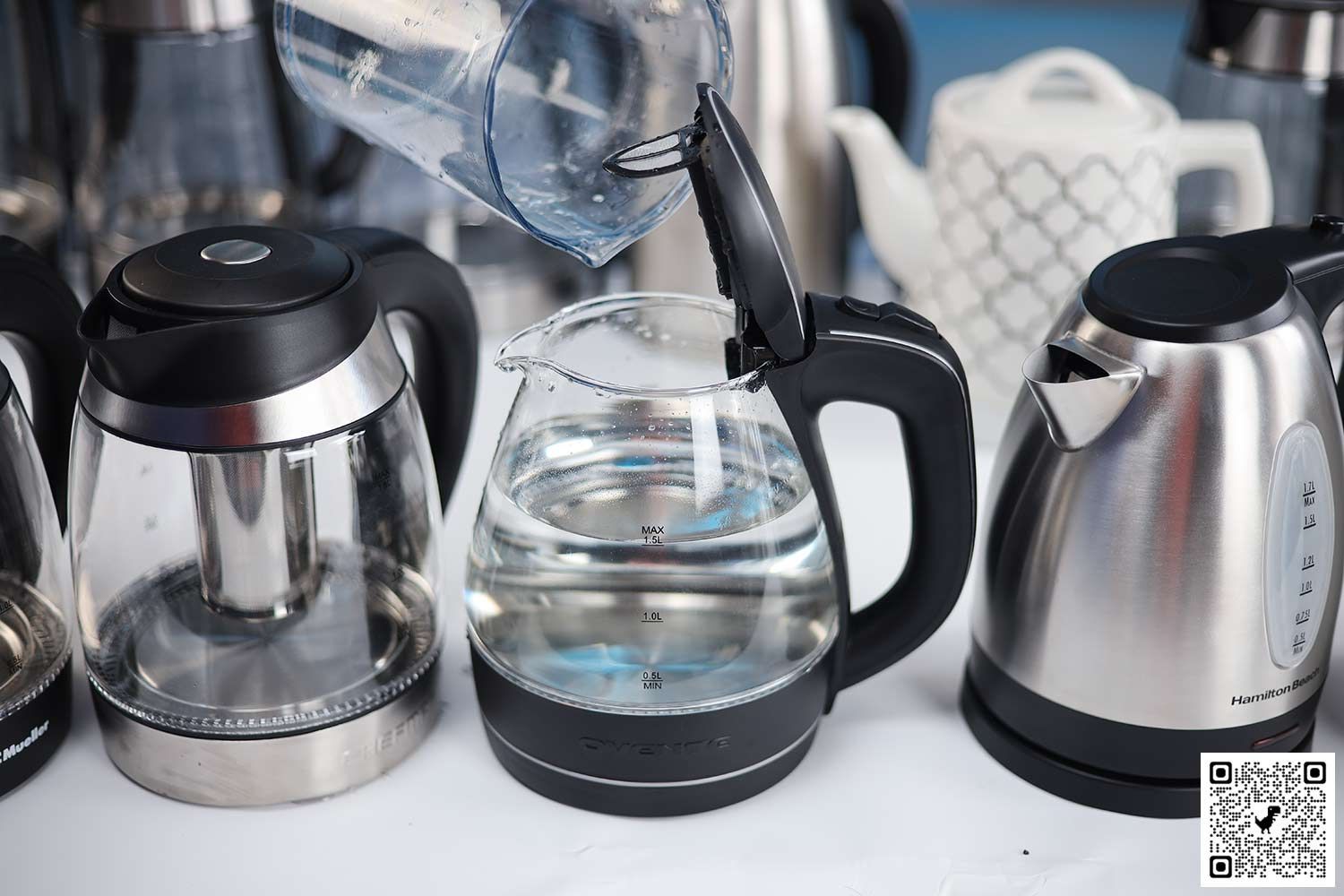
First, we test all kettles with the same volume of water for fair and comparable results:
The common electric kettle (not the gooseneck pour-over variety) usually has a capacity of minimum 0.5 liters and maximum 1.5 to 1.8 liters. Thus, we chose the middle ground—1.5 liters— to conduct our boiling time test.
We found the common minimum amount of 0.5 liters (to safely boil water) too small a ratio to the kettles’ power output to properly assess their boiling time. Another common test volume is 1 liter since it’s easy to round up, but we’re all about practical, user-based testing. People are more likely to put the kettle on with a near maximum volume of water rather than halfway or just a couple of cups.
For gooseneck kettles, however, 0.5 liters is the ideal amount. The same reasons apply, only in their case, their common maximum capacity is around 0.5 to 0.8 liters.
Starting Temperature
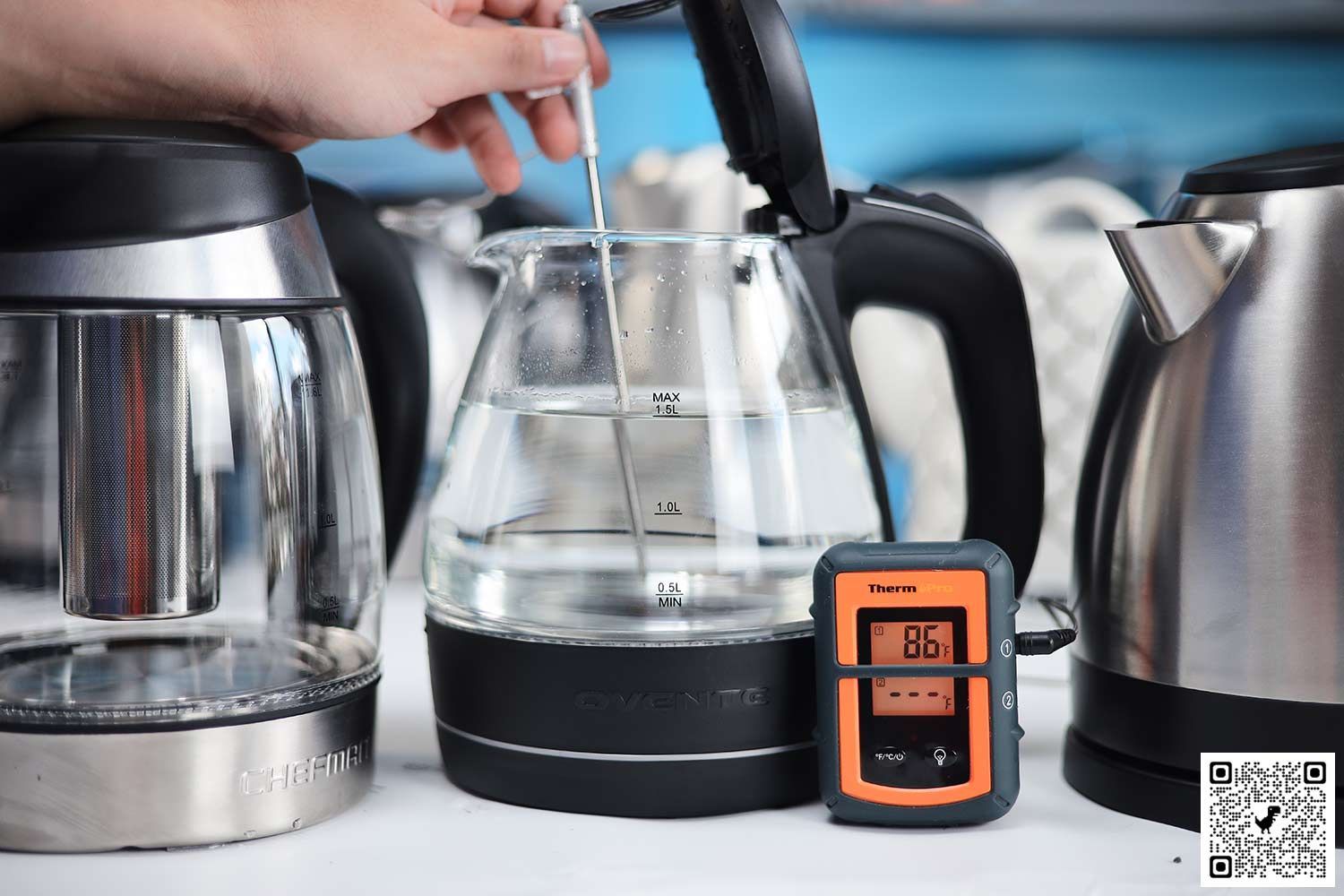
Second, since the goal temperature is always the same—water boiling temperature or 212°F/100°C—we need to make sure that the starting temperature is always the same as well.
Our test water is simply tap water at room temperature—commonly 80°F/26.7°C. Maintaining this temperature for every test is simple enough, we just need to turn the air conditioner on at 80°F/26.7°C.
Of course, before every test, we use our calibrated probe thermometer to check the water temperature.
Steps
1. Fill the kettle with 1.5 liters of room-temperature tap water and plug in (we use a customized outlet as per the circuit analysis in our Energy Consumption test).
2. Turn on the kettle and check if the indicator light is on.
3. Monitor the boiling time using a digital timer.
4. Once the kettle boils and automatically turns off, immediately stop the timer.
5. Record the kettle’s boiling time.
Scoring
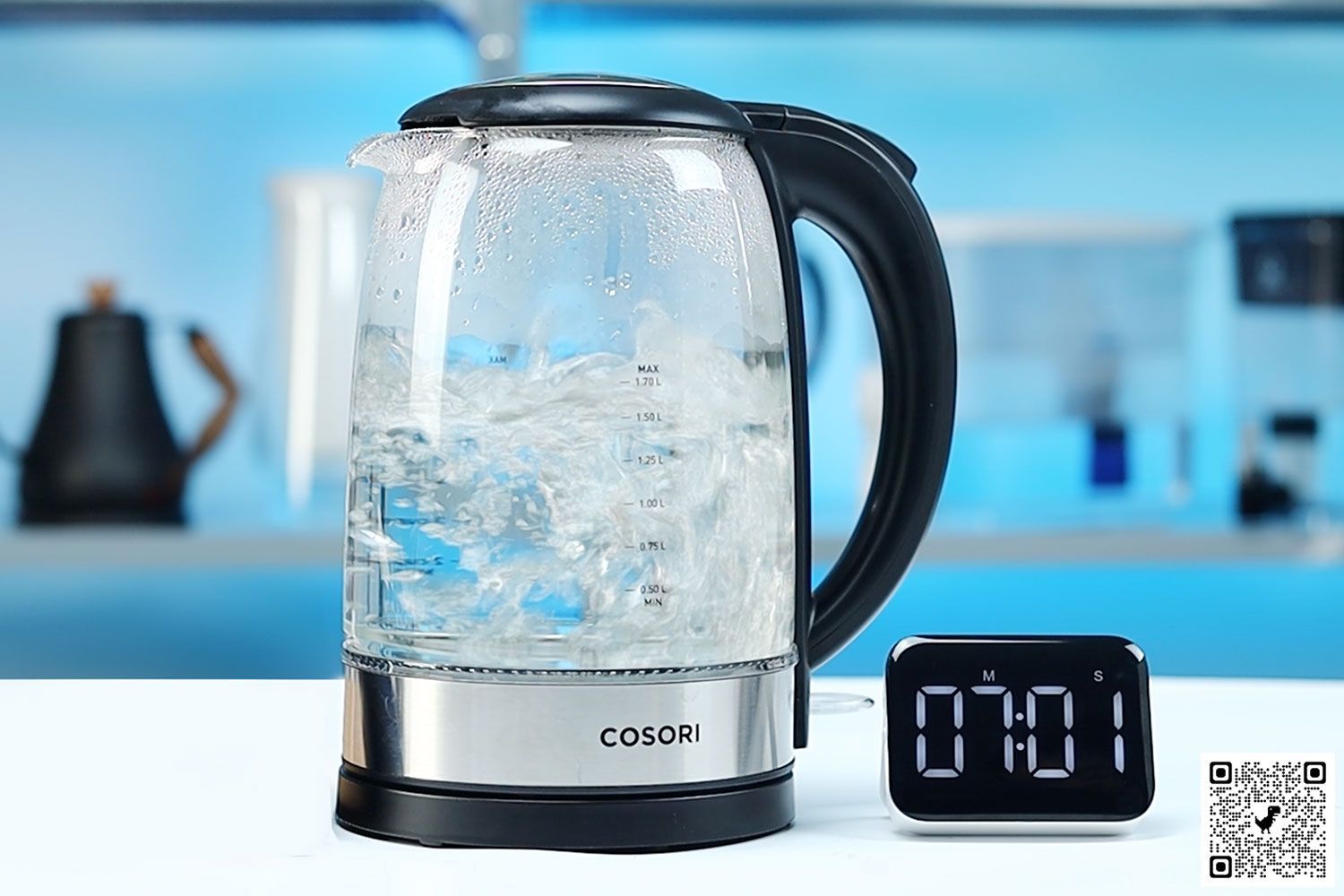
To devise our Boiling Time scoring table, we use a combination of real-time data collection and basic physics formulas.
1. Water heat capacity is 4.2 kJ/kg°C, meaning that it takes 4.2 kJ (kilo-Joules) of energy to raise the temperature of a kilogram of water by 1°C.
If the water temperature is 26.7°C (80°F), to boil 1.5 liters of water, one needs:
E = 4.2 * 1.5 * (100 – 26.7) = 461.8 kJ
2. Electric kettles have a power draw ranging from 1 kW to 1.8 kW. However, our research found that the most common and highest power draw was 1.5 kW, and similar to the majority of kettles we tested. So, we use 1.5 kW to calculate the ideal amount of time to boil 1.5 liters of water at 26.7°C (80°F):
T = 461.8 kJ / 1.5 kW = 307.86 seconds = 5 minutes and 7.86 seconds
As such, based on theory, we set our benchmark for a 10/10 score to be 5 minutes.
From the data we have collected, the average electric kettle performance is around 7 to 8 minutes. Therefore, we chose to deduct one point for each 1-minute increase in boiling time from the benchmark.
We also decided that over 11 minutes is simply too long a boiling time to be acceptable. Thus, any kettle taking 11 minutes or more to boil receives a 0/10 score for boiling time.
The final tabulation is as follows:
10 | 9 | 8 | 7 | 6 | 5 | 4 | 0 |
|---|---|---|---|---|---|---|---|
5 minutes | 6 minutes | 7 minutes | 8 minutes | 9 minutes | 10 minutes | 11 minutes | > 11 minutes |
